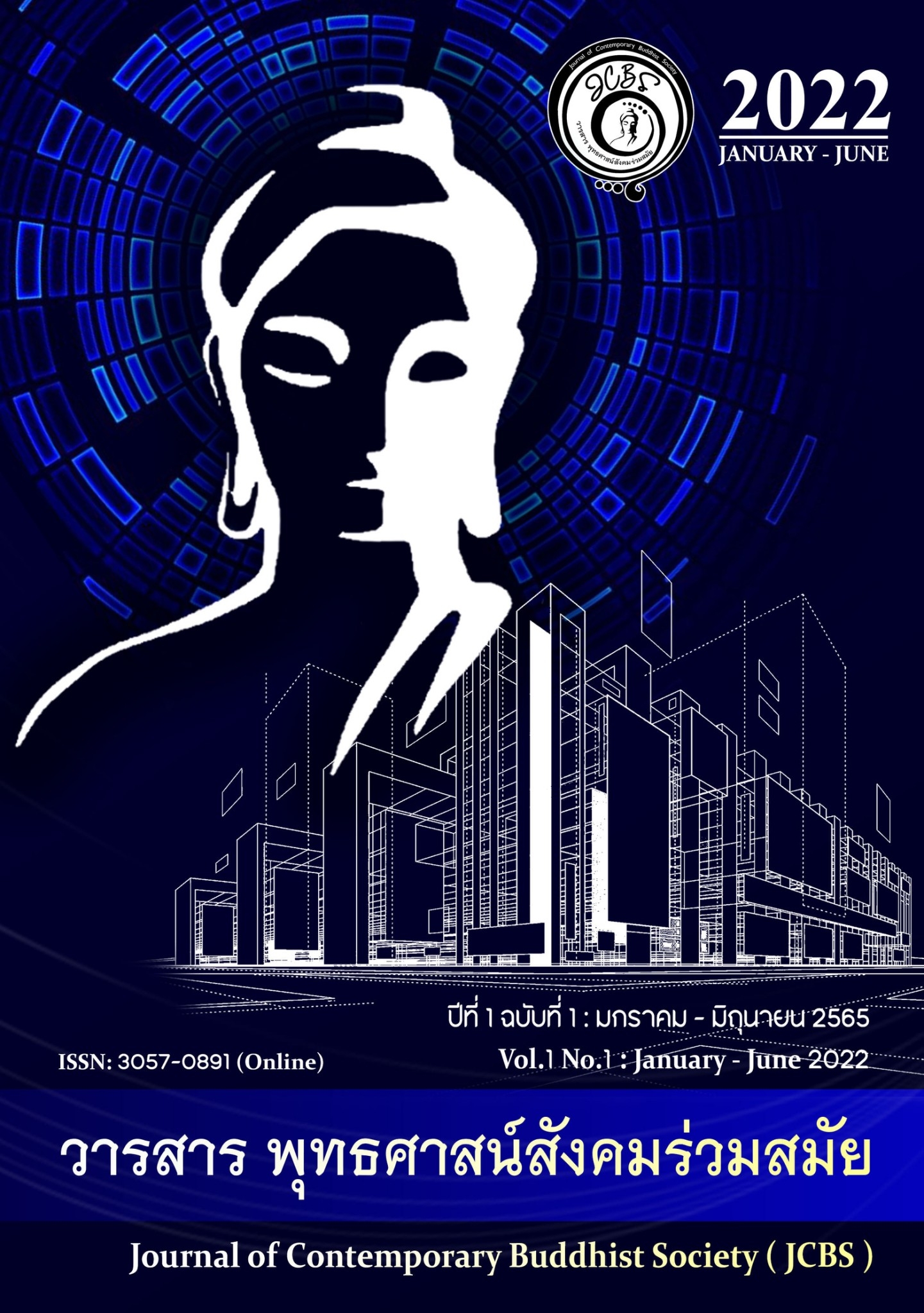อิทธิพลของพระพุทธศาสนาเถรวาทที่มีต่อชาวรามัญ
คำสำคัญ:
ชาวรามัญ, พระพุทธศาสนาเถรวาท, วัฒนธรรม, สังคม, สถาปัตยกรรมบทคัดย่อ
บทความนี้มุ่งวิเคราะห์อิทธิพลของพระพุทธศาสนาที่มีต่อชาวรามัญในด้านวัฒนธรรม สังคม และประวัติศาสตร์ โดยเน้นการผสมผสานระหว่างหลักธรรมคำสอนในพระพุทธศาสนาเถรวาทกับวิถีชีวิตของชาวรามัญ อิทธิพลทางวัฒนธรรมปรากฏผ่านภาษา วรรรณกรรม ประเพณี และเทศกาลทางศาสนา ขณะที่อิทธิพลทางสังคมสะท้อนผ่านบทบาทของพระสงฆ์ในฐานะผู้นำจิตวิญญาณและศูนย์กลางการพัฒนาชุมชน ตลอดจนคุณธรรมและจริยธรรมที่ได้รับการปลูกฝังในวิถีชีวิตของชาวรามัญ
ในด้านสถาปัตยกรรมและศิลปกรรม เจดีย์และวัดของชาวรามัญ เช่น เจดีย์ชเวดากองในเมียนมาสะท้อนเอกลักษณ์ของสถาปัตยกรรมพุทธศิลป์ที่ที่ทรงคณค่า อีกทั้งชาวรามัญยังมีบทบาทสำคัญในการเผยเผยแผ่พระพุทธศาสนาเถรวาทในภูมิภาคเอเชียตะวันออกเฉียงใต้ โดยเฉพาะในเมียนมาและไทย
แม้ในปัจจุบันชาวรามัญจะเผชิญความท้าทายจากกระแสโลกาภิวัตน์และการเปลี่ยนแปลงทางสังคมแต่พระพุทธศาสนายังคงเป็นแก่นสำคัญที่หล่อหลอมอัตลักษณ์ วิถีชีวิต และวัฒนธรรมของพวกเขา ทั้งนี้บทความได้เสนอให้เห็นถึงพลังของพระพุทธศาสนาในการสร้างความสามัคคี ความสมานฉันท์ และความเข้มแข็งในชุมชน โดยยังคงเป็นรากฐานที่สำคัญในการธำรงเอกลักษณ์ทางวัฒนธรรรมและศาสนาของชาวรามัญในยุคสมัยปัจจุบัน
เอกสารอ้างอิง
Buranakup, S. (2012). Society and Culture of the Mon People. Nakhon Pathom: Mahidol
University.
Harvey, G. E.(1952). History of Burma: From the Eariest Times to 10 March 1824. London:
Frank Cass & Co. Ltd.
Htin Aung, Maung. (1967). A History of Burna. New York and London: Cambridge University
Press.
Kluaymai Na Ayudhya, T. (2011). History of Southeast Asio. Bangkok: Matichon.
Koset, S. (1981). The Study of Thai Traditions. 310 Edition. Bangkok: The Royal Institute.
KPH No. 40/2519, Wat Pho (abandoned) Inscription, Mueang District, Nakhon Pathom Province,
discovered in 1952. Written in Pallava script and Old Mon language. "Inscriptions in
Thailand," Princess Maha Chakri Sirindhom Anthropology Centre (Public
Organization). Currently housed in the National Museum, Phra Pathom Chedi.
[Online], Available at: https://db.sac.or.th/inscriptions/inscribe/detail/271 [16 July
.
Lieberman, Victor B.(2003). Strance Parallels: Southeast Asia in Global Context. c.800-1830.
volume 1, Integration on the Mainland. Cambridge University Press.
Myint-U, Thant. (2006). The River of Lost Footsteps-Histories of Burno. Farrar: Straus and
Giroux.
Pe Maung Tin, & Luce, G. H. (1928). The Mon. London: Oxford University Press.
Phraya Boran Ratchathanin (Phon Dechakhup). (2021). The Octagonal Pillar Inscription,"
currently housed at Vajirayana Library, National Library of Thailand, Bangkok. D-
Library; National Library of Thailand. [Online]. Available at:
http://164.115.27.97/digital/items/show/6515 [16 July 2021].
Phra Brahmagunabhorn (P.A. Payutto). (2003). Buddhadhamma. Bangkok: Sukkhaphapjai
Publishing.
Suchchaya, S. (2021). History of the Mon - The Mon People on the Land of Suvamabhumi.
[Online]. Available at: http://www.monstudies.com.
Sunthornwat, A.(2004). Thai Mon: 8 Ethnic Groups in Rotchoburi. Ratchaburi Provincial Cultural
Office and Ratchaburi Provincial Cultural Council: Thammarak Printing.
Taylor, R. H. (2009). The State in Myanmar. Singapore: NUS Press.
UNESCO.(2010). Shwedagon Pagoda: A timeless heritage of the Mon people. World Heritage
Review, 12(3), 45-59.
ดาวน์โหลด
เผยแพร่แล้ว
รูปแบบการอ้างอิง
ฉบับ
ประเภทบทความ
สัญญาอนุญาต
ลิขสิทธิ์ (c) 2024 วารสารพุทธศาสน์สังคมร่วมสมัย

อนุญาตภายใต้เงื่อนไข Creative Commons Attribution-NonCommercial-NoDerivatives 4.0 International License.



